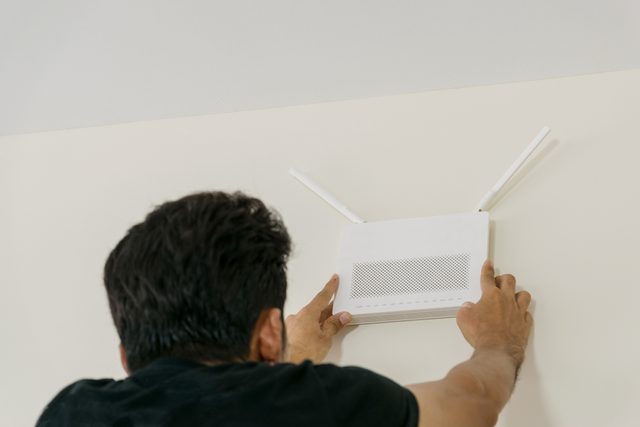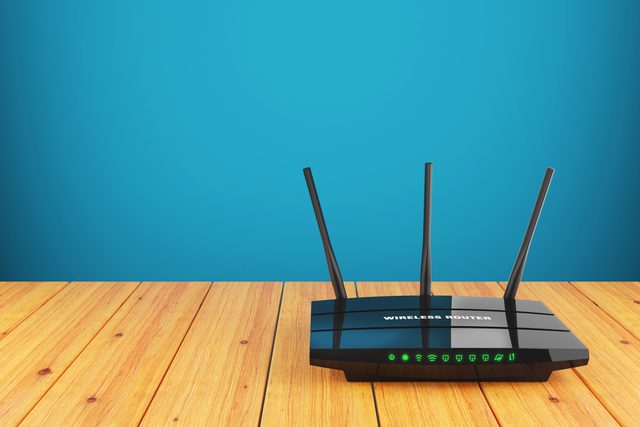A guide to troubleshooting the source of your WiFi network.
Our editors and experts handpick every product we feature. We may earn a commission from your purchases.Learn more.


A guide to troubleshooting the source of your WiFi network.
Our editors and experts handpick every product we feature. We may earn a commission from your purchases.Learn more.
Slow internet can lead to a quick headache. Here's how to check your router for potential problems.
When the internet in your home is slow or sluggish, there’s one place you should always check first: your wireless router. Your router is where all the devices in your home connect to and access the internet. If it’s not working to its full capacity, chances are your devices aren’t either.
But if you aren’t sure how a router works, troubleshooting it can be a tall task. Here’s a guide to all the things that might be going wrong with your router, along with some fixes — some simple and obvious, and some that might take a little more tech know-how.
A router derives its name from its job “routing” the internet traffic in your home, as a connection point between your devices and the World Wide Web. In most cases, your router either connects to the internet through a cord to a modem (more on the difference between a router and a modem), or a cord running to a jack in your wall provided by your internet service provider, or “ISP”.
Once the router is connected to the internet, it creates a network through which other devices access the web. Every router has a limited range to broadcast its WiFi network. The further outside that range a device gets, the weaker its connection. When a strong internet connection is paired with a high quality router, the WiFi throughout a home should handle streaming, gaming, video conferencing and more without any issues. In theory, at least.

When troubleshooting a router, first check the cords running into the back of the device. If one of the cords isn’t plugged in or came halfway undone from its port, the solution to your internet woes might be as simple as pushing it back in.
If it seems like one of your cables is consistently coming loose, consider buying a new one. Ethernet cables, the kind used to transfer data between a router and a modem or the router and the internet jack, have what is called an “RJ-45 connector” on the end.
When you push an RJ-45 connector into an ethernet port, there should be a satisfying “click” as soon as the connection is secure. If you can’t hear the click, then the connector is likely broken and should be replaced.

Now we get to the tried and true, golden classic of tech troubleshooting: Have you tried turning it off and then back on again?
Plenty of people know you can solve internet issues by simply unplugging the power cable of your wireless router (usually a black cord that doesn’t look like an ethernet cable), waiting a short period of time, and then plugging it back in. Less well known, though, is the reason why this troubleshooting step works.
Your router is a computer and, like any computer, things go wrong internally from time to time. Unplugging the router from its power source resets the device. Waiting a short period of time after unplugging, even ten seconds, allows the router to power down so that a full reset takes effect. Reseting the router’s internal computer is often enough to restore the device to proper working order.

If you’ve checked the cables and reset the router and your WiFi still isn’t functioning properly, it’s time to check in with your internet service provider.
There’s a chance that the problem with your network has nothing to with you or your router, that something is wrong on the other end. Some ISP’s have a map on their website reporting locations with system outages or reported slower speeds, making it easy to see if there’s a problem in your area.
If your ISP does not provided this service, give them a call and see if they are experiencing any widespread outages. If they are, there’s nothing else you can do except wait for the company to resolve whatever problems are causing the issue. Sometimes calling in is the best way for your ISP to notice an issue and send a technicians to investigate.

If your ISP don’t see anything wrong with their networks, try moving your router to a more central location in your home. Your slow speeds might simply be a symptom of your device’s distance from the source of the network.
By repositioning the router, you’re making it easier on devices that may have had trouble establishing a connection. Moving your router can be as simple as buying a longer ethernet cable and snaking it through your home to a more suitable spot. Pick a location that’s in the open and unobstructed by large, metal objects.
But if you don’t want to go through all of that hassle, setting up a WiFi range extender is also an option. Say your router is on the top floor of your home and speeds are slow in the basement. Putting a range extender on the middle floor will do exactly that — extend the range of your network by creating a new signal from the same network.
You’ll have twice as many network names to sort through when you’re trying to connect to WiFi, but you’ll also have a working wireless internet connection no matter where you are in your home.

Many modern routers are “dual-band,” which means they can be set up to broadcast two WiFi channels. Dual-band routers feature 2.4GHz and 5GHz channels, and the differences can be stark.
A 2.4 GHz network has more range but can’t match the bandwidth or speed of the 5GHz connection. The 2.4GHz frequency is also more common and can be clogged with other devices sending out signals on that channel, like a baby monitor or a garage door opener.
Sometimes increasing the internet speed on a device can be as simple as switching from the 2.4GHz to the 5GHz network. Note that some devices, like select older iPhones, cannot connect to 5GHz WiFi. If you’re having trouble connecting to or discovering a 5GHz network, see if your device supports that frequency in the first place.

If you’ve gone through all the steps above and the WiFi in your home is still performing at low levels, it might be time to replace the router with a newer model.
If you’re renting your router from your ISP, contact them about a new model. If not, do some research and find out what kind of router you need to fulfill all your network needs.
Make sure that the model you purchase is capable of handling the maximum internet speeds that you’re paying your ISP for. Paying for “high speed internet” wastes money if your router can’t handle your plan’s top speeds.
You don’t have to break the bank to get a top-rated, high performance router, either. This model from TP-Link is dual-band, supports speeds up to 1,300 mbps (more than enough for the average home), and can even be set up with a VPN for a safer, more secure network — all for less than $70.
Want to know more before making a purchase? Here’s our guide to buying a router.